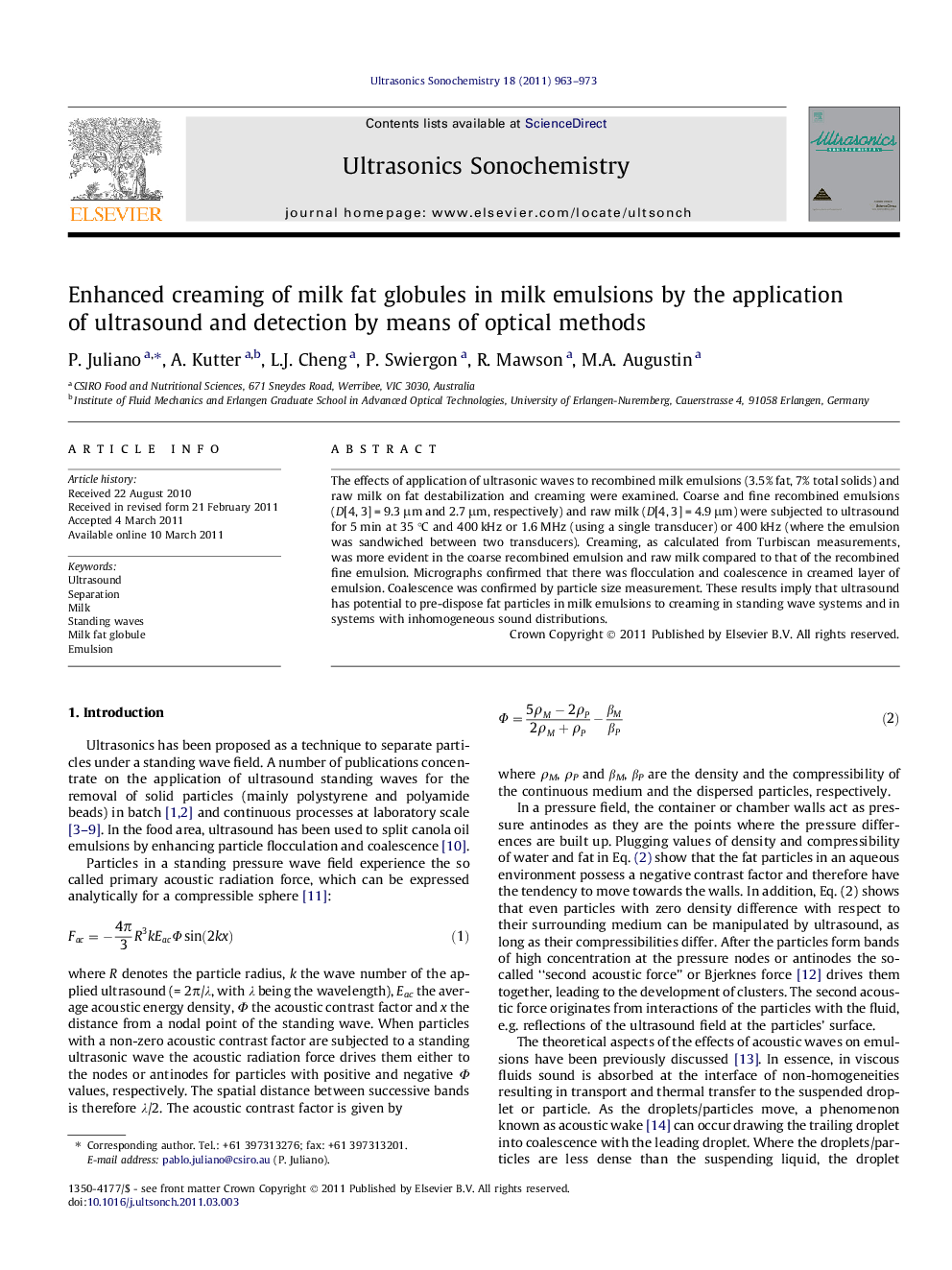| کد مقاله | کد نشریه | سال انتشار | مقاله انگلیسی | نسخه تمام متن |
|---|---|---|---|---|
| 1266972 | 972311 | 2011 | 11 صفحه PDF | دانلود رایگان |

The effects of application of ultrasonic waves to recombined milk emulsions (3.5% fat, 7% total solids) and raw milk on fat destabilization and creaming were examined. Coarse and fine recombined emulsions (D[4, 3] = 9.3 μm and 2.7 μm, respectively) and raw milk (D[4, 3] = 4.9 μm) were subjected to ultrasound for 5 min at 35 °C and 400 kHz or 1.6 MHz (using a single transducer) or 400 kHz (where the emulsion was sandwiched between two transducers). Creaming, as calculated from Turbiscan measurements, was more evident in the coarse recombined emulsion and raw milk compared to that of the recombined fine emulsion. Micrographs confirmed that there was flocculation and coalescence in creamed layer of emulsion. Coalescence was confirmed by particle size measurement. These results imply that ultrasound has potential to pre-dispose fat particles in milk emulsions to creaming in standing wave systems and in systems with inhomogeneous sound distributions.
Research highlights
► Ultrasound standing waves can be used for physical destabilisation of milk emulsions.
► High frequency ultrasound enhances creaming of raw and recombined milk emulsions.
► Extent of flocculation and coalescence depends on frequency and transducer configuration.
► A two-transducer configuration is superior to a single transducer for increasing creaming.
Journal: Ultrasonics Sonochemistry - Volume 18, Issue 5, September 2011, Pages 963–973